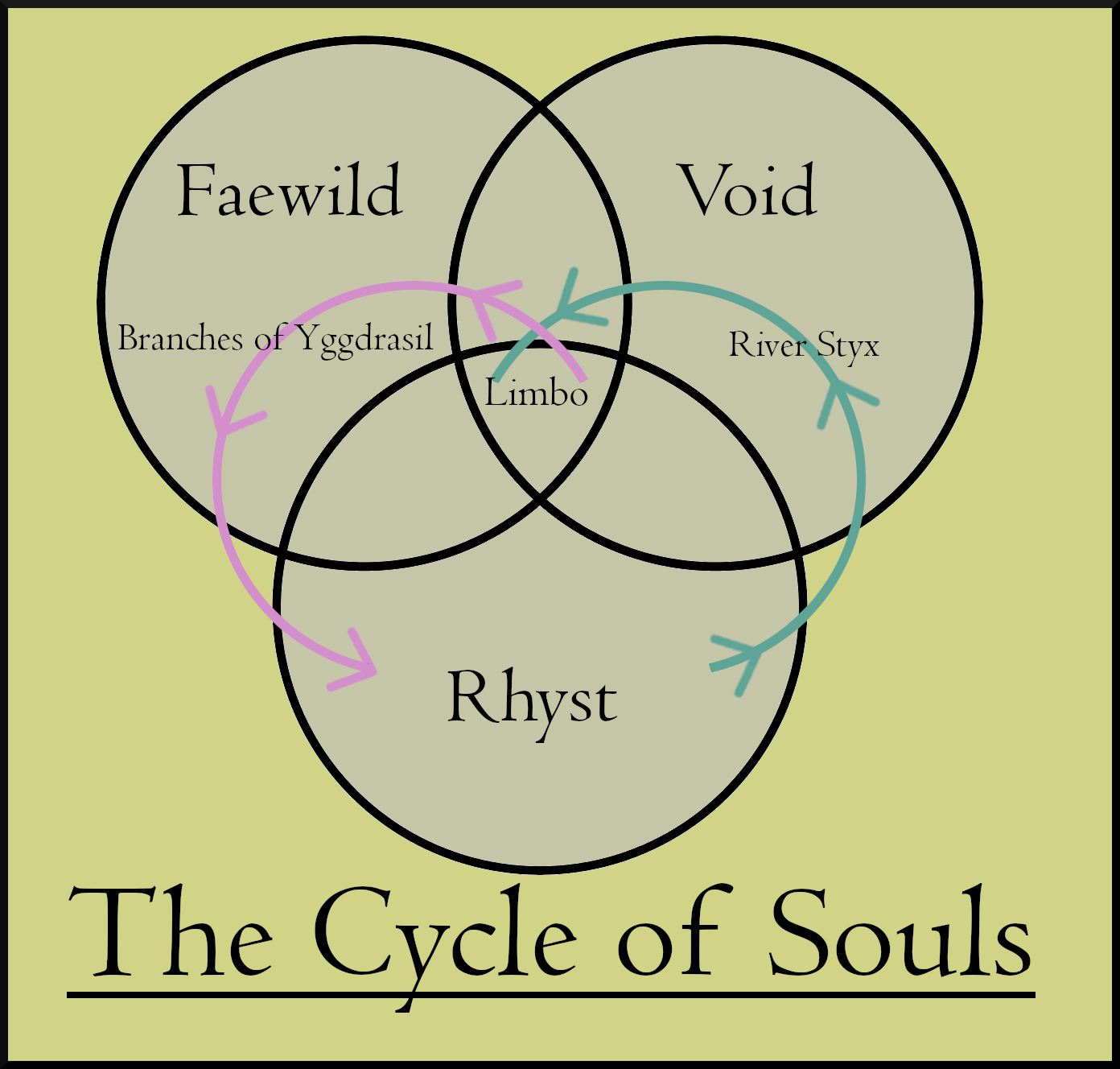Cycle of Souls
Introduction[edit]
Ever since life has existed, questions and ideas as to what the afterlife was like have persisted. Some believe in a utopia where all live in harmony, others subscribe to a notion of reincarnation. The latter has been the prevailing theory throughout the age of the Empire and Arlandria, and with more refinement and understanding through conversations with the spirits, the overall concept has been dubbed the Cycle of Souls. It is still regarded as shaky and somewhat uncertain myth, but there has not yet been a greater concept to take its place, and so the Cycle of Souls continues on the as the leading idea regarding what happens after death and how life comes to be.
Mythos[edit]
Upon the event of the Sundering, a central well of vacant space opened within the cosmos. All unclaimed energy, mana, and matter was caught in its pull, and the bits that reached the opening were swallowed into the vacuum never to be seen again. Lost as they were with the threat that even more would be claimed by the well, an Eidolon of the Void ventured toward the opening and used their power to stop the current of reality traveling toward it. Through the Eidolon's design, the space became called Limbo, and the flow of energy and material was changed and altered into the form of an ethereal river upon the realization that the pull could not be staunched, but it could be controlled. This river, made of what remained of the dark oceans of the Endless Void, manifested as a current of Stygian waters, connected to Rhyst where life blossomed in full under the direction of the Dragons and cut through the newly formed Void before it curved into Limbo where it pooled. Though the Stygian waters filtered the collection of physical matter out of Limbo's draw, the essence of mana and energies that lost their corporeal ties to the world were still very much caught in the river.
While the Eidolon could ensure the collecting essence did not pass on into obliteration, it foresaw the problem of Limbo collecting a potentially grandiose amount of energy where it would someday overflow. An outlet was needed, and thus the branches of Yggdrasil were borrowed. Titania's creation, a pinnacle example of eternal life, was allowed to reach out across the planes and into both Limbo and Rhyst. Where the branches connected to the foreign planes, their surface was set alight with Faerie Fire, thus purifying the energy, essence, and souls that were sent on to return to the worlds renewed.
With Yggdrasil forming the other half of the cycle, the river was called the Styx, an Eidolonic reference to the infinite, dark waters that flooded its current. The two in tandem have generated these systems of the afterlife that have operated ever since.
Trivia[edit]
The Eidolon of Limbo reigns supreme over the realm of the dead, but the River Styx is constantly monitored and even stolen from by the forces of Vul'Karik, Paschia Fel, and Nevanerro. It is through these trespasses that necromancy, witchcraft, and the damnation of the sinful are possible.
It is believed that despite her offered assistance, Titania still holds her own reasons for allowing Yggdrasil to fill the role that it does within the cycle, and while some recognize this act as benevolent, others see her as a Fae entity capable of genius manipulations of her kin.
The spirit Samsara holds his domain at the edge of the world where Rhyst's oceans used to flow into the Styx, while the grand forests of Sylva are believed to be where the branches of Yggdrasil once bridged into the world, however, in recent times, both have been disrupted and their points of intersection are believed to have moved
It is believed that Naim and Vitae form the makings of a soul, but there are also some stranger elements mixed in that have yet to be fully studied
